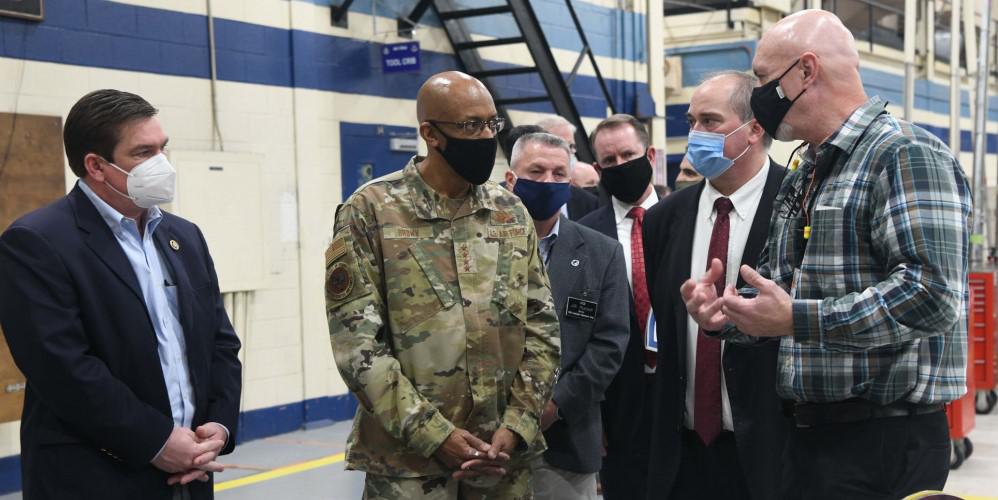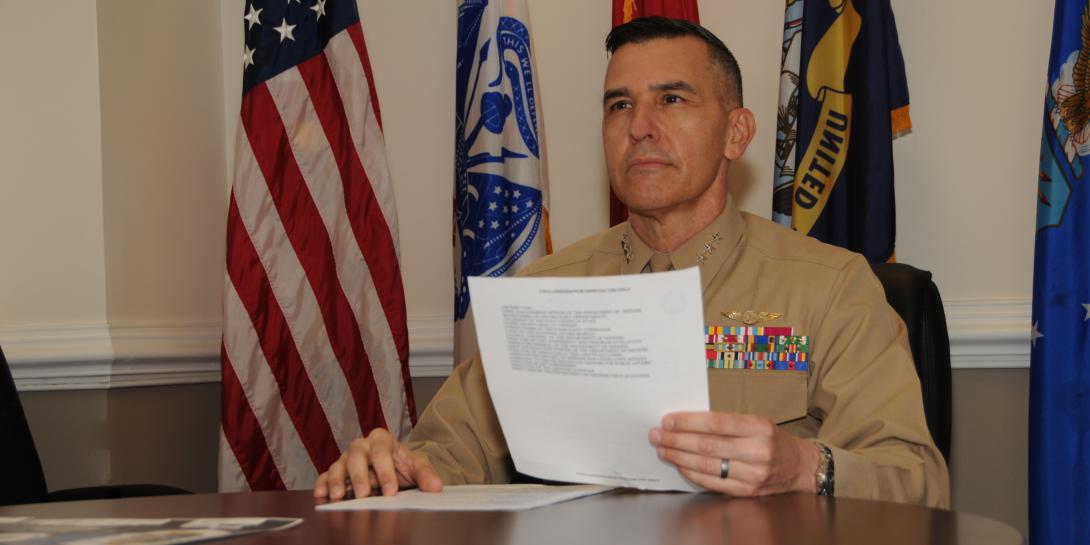Allocating Combat Roles in a Joint Environment
With the U.S. military’s push to be able to operate across all warfighting domains—sea, air, land, space and cyberspace—simultaneously with all of the services, the allocation of combat roles presents a potential sticking point. Top leaders at the Pentagon’s Joint Staff are optimistic, however, that the designation of each service’s roles and missions in Joint All Domain Operations, or JADO, can be resolved through several processes. The Joint Warfighting Concept, the budgetary process and top-level discussions with officials from the Office of the Secretary of Defense (OSD), among other activities, will all help in that allocation decision-making.
It will not require a full-scale roles and missions commission, nothing like the historic meeting in Key West, Florida, in March 1948, led by the first secretary of defense, James Forrestal, and the Defense Department military chiefs, where they hashed out an agreement on the original allocated roles for each service, said Gen. Charles Brown, USAF, chief of staff of the Air Force.
“Having the services go through a full roles and missions commission and open it up and go all the way back to the Key West agreement, I don’t think that is what we need to do,” said Gen. Brown, speaking to reporters during a Defense Writers Group forum. “I wouldn’t necessarily go through a complete roles and missions, but I do think that as we go into the Joint Warfighting Concept, and we look at gaps, seams and overages of capability, this is where the discussion has to occur, on the aspects of roles and missions.”
For the better part of the last year, the Joint Staff has been preparing an updated Joint Warfighting Concept document. The concept will guide DOD’s globally integrated operations and drive the development of joint-concept, threat-informed capabilities. It will guide how the military will fight well into the future and is a bit of a shift from the traditional lines of establishing a forward edge of the battle with fires support, with warfighting across all domains at one time adding to that construct.
The Joint Warfighting Concept also will provide a unity of effort for force development and design, stated Lt. Gen. Dennis Crall, USMC, the Joint Staff’s director, Command, Control, Communications and Computers/Cyber, and chief information officer. The general, who is also known as the J-6, spoke in an interview with SIGNAL Magazine.
The Joint Staff sees the future battlefield as one that crosses all domains, with Joint All Domain Command and Control (JADC2) integrating the vast operations. As for how the Joint Staff will assign primary responsibility for the JADC2 lines of effort across the Army, Air Force, Marine Corps, Navy, and Space Force, Gen. Crall explained that it will stem from the Joint Warfighting Concept.
“Part of the confusion has been the understanding of what transfers from the Joint Warfighting Concept into JADC2,” he said. “The Joint Warfighting Concept has been divided by giving each of those supporting concepts a service lead. For example, the Air Force is the service lead for the Joint Command and Control, or JC2, aspect, and they are doing great work. When it comes to JADC2, it becomes a much broader ecosystem. [It is] much, much bigger; much more complex; and with far more stakeholders involved than the original Joint Warfighting Concept. Each of those lines of effort will have sub-objectives and those sub-objectives will have OPRs [offices of primary responsibility] assigned and that bidding process will be worked through the Joint Staff.”
The J-6 and Joint Staff will examine JADC2 assignment recommendations and have a discussion with Gen. John Hyten, USAF, vice chairman of the Joint Staff, Gen. Crall noted. “Some of it will be decided at the vice’s level with some discussion,” he clarified. “Some of these are already so naturally aligned to ownership that it will be a light lift and an easy transition. Other lines of effort have multiple statements and those decisions will have to be made on a series of arguments on those best suited to deliver them, balanced with equity and just distribution.”
For Gen. Brown, the key in those discussion will be to identify where there are any holes and overlaps in the joint all domain operations (JADO) capabilities across the services. “What we do need to look at as we go through the Joint Warfighting Concept is where we have those gaps and overages,” Gen. Brown stated. “We have to look at our offensive capability and also our defensive capability, look at logistics, look at our command and control, and see where we have some disconnects. And I believe that the Joint Warfighting Concept, as we go through this process, it will help identify where we need to put more focus on.”
Another way specific JADO roles and missions could be defined is through the DOD’s Joint Requirements Oversight Council, or JROC, a statutory acquisition body, which among other responsibilities, assesses the military’s joint capabilities, identifies, approves and prioritizes capability gaps; reviews and validates if a capability fulfills a joint need; and establishes joint performance requirements.
“Ideally, that is the way that Gen. Hyten is trying to use the JROC, to pass a JROC and validate it with the services as joint,” Gen. Brown explained. “What I expect to see, from talking to him, is that the JROC will be a little more directive on things that we need to do to ensure we have joint capability going forward. That is what I see happening and I think it will be an ongoing dialogue between the services, with the Joint Staff and the JROC.”
However, the JROC process will not handle it all, the Air Force chief of staff continued. “I think there’s going to have to be something other than the JROC,” he noted. “It would have to be a bit more with OSD and opening up the conversation on roles and missions. I think the JROC will help inform and help us define where those gaps, seams, and overages may be.”
The budgetary process also inherently provides a forum for the military services to flush out their different roles when it comes to providing technologies and capabilities for JADC2. “When the services submit their budget, there is a give and take between the services,” Gen. Brown stated. “That is a way they can also be influenced. We have this new team under [Defense] Secretary [Lloyd J.] Austin’s leadership and Deputy Secretary [of Defense Kathleen] Hicks, and I think there’s a conservation we need to have as we go forward.”
In addition, the JADC2 Cross Functional Team (CFT) will continue to serve an important role in hashing out concepts and solutions for JADO, Gen. Crall stated. “The CFT has been operating for some time now and is really the most advantageous entry point for those who want to ensure that their fingerprints are on the output of what not only the document has to say but also the delivery of capabilities that come as a result,” the J-6 said. “The CFT is positioned right now not as a waning star but one that is actually being reorganized and growing, both in influence and in size.”






Comments